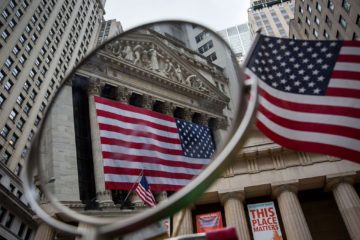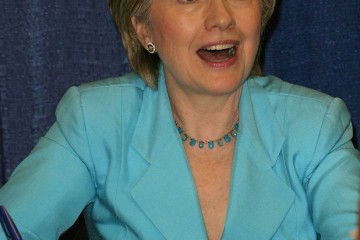Breaking Up the Big Banks Offers a Lot to Like: Barry Ritholtz

published Apr 7th 2017, 10:56 am, by Barry Ritholtz
(Bloomberg View) —
One of the great misunderstandings about the financial crisis is the role that repealing the Glass-Steagall Act played. This is newly relevant, as there has been interest from White House economic adviser Gary Cohn in restoring the Depression-era legislation. President Donald Trump is said to want to keep his campaign promise to restore Glass-Steagall as well.
As someone who (literally) wrote a book on the subject, it’s a good time to revisit the actual impact of the repeal , and what its resurrection might mean to banks, investors, Wall Street and taxpayers.
We begin by recounting why we had Glass-Steagall in the first place: the 1933 legislation divided banking into Main Street and Wall Street. Perhaps the best illustration of this is J.P. Morgan & Co. When the house of Morgan was split in two, one part became JP Morgan, a commercial bank (today it’s known as JPMorgan Chase & Co.) and Morgan Stanley, a brokerage firm.
The Main Street half of banking handled lower-risk activity, accepting deposits held in savings and checking accounts, while making personal and commercial loans and mortgages. The deposits in these institutions are backed by the Federal Deposit Insurance Corp., which ultimately is guaranteed by taxpayers. This backstop effectively ended the tendency of banks to collapse amid panicked deposit runs spurred by bad news, either real or fake.
Wall Street is the more speculative side of banking — it uses capital for trading, underwriting, mergers and acquisitions, investing, syndication, asset management and initial public offerings. These pools of capital (aka other people’s money) take on more risk, and in exchange potentially earn higher returns. As we saw in 1929 and again in 2008-09, there is the possibility of catastrophic loss, wiping out entire companies.
Hence, Glass-Steagall was designed to act as a firebreak between Wall Street and its appetite for risk and Main Street and its demand for safety. The 1987 stock-market crash, before Glass-Steagall was gutted, is a perfect example of how a crisis on Wall Street was isolated from Main Street.
The repeal of Glass-Steagall was a process pushed by bankers that was decades in the making. Many people see the repeal as a primary cause of the crisis. However, having exhaustively researched this, I am unable to find any specific data or evidence that the repeal was a primary cause of the financial crisis.
But the Glass-Steagall repeal did have a significant impact: After its repeal, banks merged into more complex and more leveraged institutions. They bought brokers and trading firms, created internal hedge funds and engaged in all manner of financial engineering that wouldn’t have been allowable before repeal.
Thus, the repeal led to banks becoming much bigger. It’s fair to say when the new larger and more intertwined banks crashed, it made the crisis significantly worse than it would have been otherwise.
All of which makes the idea of resurrecting Glass-Steagall so interesting: If we were to once again separate the two branches of banking, it would create an intriguing situation about what other banking regulation could be cut.
The Dodd-Frank Act, adopted in 2010, was designed to avert another crisis and protect taxpayers in the event one did occur. We don’t want banks to implode for a variety of reasons. We certainly don’t want to turn to taxpayers for bailouts, either directly or via the FDIC insurance fund. And we don’t want finance’s occasional disasters to spill over to the broader economy, as happened in 2008-09. But as long as Main Street and Wall Street banking is interconnected, preventing another credit crisis like the one we had will be difficult, messy and costly.
Imagine if the U.S. instead split finance in two — one half called speculative banking and the other called safe banking. In that scenario, when a speculative bank blows up, who really cares? Some bankers would lose their jobs, large investors who knew the risks would suffer losses and that would mostly be that, with consumers being largely insulated from the shocks. There is a case to be made that much of the expensive and cumbersome Dodd-Frank rules would be unnecessary in this scenario.
Hence, we find ourselves in the unusual circumstances where potential regulatory legislation that started on the political left also has appeal to the political right.
Before you get too excited, we have been down this road before: in 2013, we had the Warren-McCain bill to restore Glass-Steagall; it went nowhere, as have other attempts. The devil is in the details as well — radically rolling back regulation was a big part of how we ended up with such a mess in the first place.
Conservatives have long demanded that Dodd-Frank be repealed and replaced. A new Glass-Steagall may be something they, along with liberals, can embrace. This is something that deserves close watching.
This column does not necessarily reflect the opinion of the editorial board or Bloomberg LP and its owners.
Barry Ritholtz is a Bloomberg View columnist. He founded Ritholtz Wealth Management and was chief executive and director of equity research at FusionIQ, a quantitative research firm. He blogs at the Big Picture and is the author of “Bailout Nation: How Greed and Easy Money Corrupted Wall Street and Shook the World Economy.”
To contact the author of this story: Barry Ritholtz at britholtz3@bloomberg.net To contact the editor responsible for this story: James Greiff at jgreiff@bloomberg.net
COPYRIGHT© 2017 Bloomberg L.P






No Comment